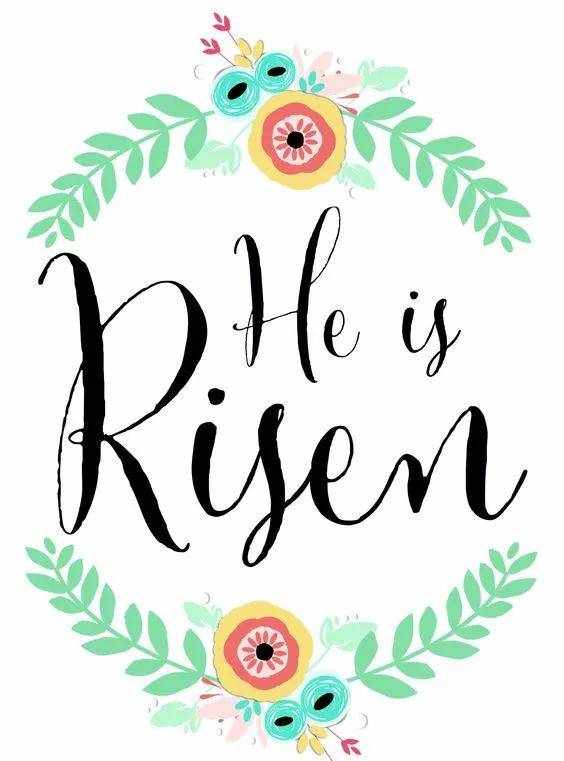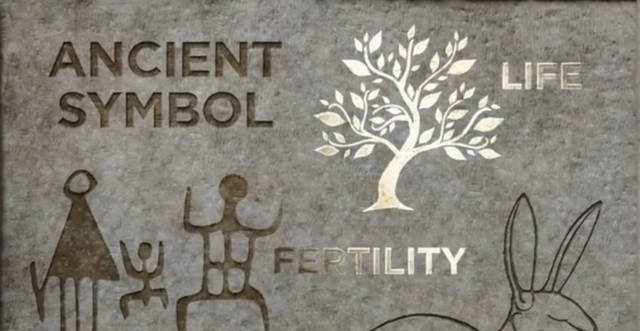

发布时间:2020-07-30 21:41:36
即刻英语FlashEnglish出品
即刻文化课堂


即刻小编按
Easter, with bunnies, baby chicks, and eggs amidst the resurrection of Jesus Christ - what do they have to do with each other? Before we tell the story of Easter, let's listen to the words of the kids,What's their opinions about Easter?
复活节,在耶稣基督的复活中,有兔子、小鸡和彩蛋,它们之间有什么关联?在我们讲述复活节的故事之前,让我们听听孩子们的话语, 他们对复活节有什么看法?
▲Credit to: Steelehouse Media

Easter Day 复活节
Easter is a Christian holiday that celebrates the belief in the resurrection of Jesus Christ from the dead. In the New Testament of the Bible, the event is said to have occurred three days after Jesus was crucified by the Romans and died in roughly 30 A.D.
复活节是基督教的节日,庆祝耶稣基督从死里复活的信仰。在《圣经》的新约中,据说这件事发生在公元30年左右,耶稣被罗马人钉死。
The holiday concludes the “Passion of Christ,” a series of events and holidays that begins with Lent—a 40-day period of fasting, prayer and sacrifice—and ends with Holy Week, which includes Holy Thursday (the celebration of Jesus’ Last Supper with his 12 Apostles), Good Friday (on which Jesus’ death is observed), and Easter Sunday.
假期涵盖了“基督的受难”,一系列的事件和节日自齐斋节开始为期40天的禁食,祷告和献祭并以圣周结束,包括耶稣升天节(庆祝耶稣和他的12使徒最后的晚餐),耶稣受难日(目睹耶稣的死亡),和复活节。
1When Is Easter?
复活节的时间
Easter 2018 occurs on Sunday, April 1. However, Easter falls on a different date each year.
2018年复活节是4月1日,星期日。然而,每年复活节的日期都不同。
Easter Sunday and related celebrations, such as Ash Wednesday and Palm Sunday, are considered “moveable feasts,” although, in western Christianity, which follows the Gregorian calendar, Easter always falls on a Sunday between March 22nd and April 25th.
复活节和其他相关的庆祝活动,比如圣灰星期三和圣枝主日,都被认为是“可移动的节日”,不过,在西方的基督教中,复活节总是在3月22日到4月25日之间的一个星期日。
2Religious Tradition
复活节的宗教传统
The resurrection of Jesus, as described in the New Testament of the Bible, is essentially the foundation upon which the Christian religions are built. Hence, Easter is a very significant date on the Christian calendar.
耶稣的复活,正如《圣经新约》中所描述的,是基督教所建立的基础。因此,复活节是基督教日历上一个非常重要的日子。
According to the New Testament, Jesus was arrested by the Roman authorities, essentially because he claimed to be the “Son of God,” some historians believe that the Romans may have viewed him as a threat to the empire.
根据新约,耶稣被罗马当局逮捕,主要是因为他声称自己是“上帝之子”,一些历史学家认为罗马人可能以他为帝国的威胁。
He was sentenced to death by Pontius Pilate, the Roman prefect in the province of Judea from 26 to 36 A.D. Jesus’ death by crucifixion, marked by the Christian holiday Good Friday (the Friday before Easter), and subsequent resurrection three days later is said, by the authors of the gospels, to prove that he was the living son of God.
他在朱迪亚被罗马长官彼拉多判处死刑, 自公元26至36年间,耶稣被钉死在十字架上,被基督教作为耶稣受难日(复活节前的星期五), 随后三天之后复活,证明他是神的儿子。
In varying ways, all four of the gospels in the New Testament (Matthew, Mark, Luke, and John) state that those who believe in Jesus’ death and resurrection are given “the gift of eternal life,” meaning that those of faith will be welcomed into the “Kingdom of Heaven” upon their earthly death.
所有新约的四部福音书(马太,马可,路加,约翰),从不同方面陈述:那些相信耶稣的死亡和复活的人将被给予“永恒的生命”,这意味着那些信徒将在死后被迎入“天国”。
▲The Resurrection of Jesus Christ
3Passover and Easter
逾越节和复活节
Notably, Easter is also associated with the Jewish holiday of Passover, as well as the exodus of the Jews from Egypt, as described in the Old Testament. These links are clearly seen in the Last Supper, which occurred the night before Jesus’ arrest and the sufferings Jesus endured following his arrest.
值得注意的是,复活节也与犹太人的逾越节有关,也与《旧约》中描述的犹太人的离开埃及有关。这些关联在《最后的晚餐》中清晰可见,在耶稣被捕前的一晚,以及他被捕后所遭受的苦难。
The Last Supper was essentially a Passover feast. However, the New Testament describes it as being given new significance by Jesus: He identified the matzah (or bread) he shared with his 12 apostles as his “body” and the cup of wine they drank as his “blood.”
最后的晚餐基本上是逾越节的筵席。然而,《新约》将其描述为耶稣所给予的新意义:他确定了他和12个门徒们分享的无酵饼(或面包) 象征着他的“身体”和他们喝的那杯红酒 象征着他的“血”。
These rituals would come to symbolize the sacrifice he was about to make in death, and became the basis for the Christian ritual of Holy Communion, which remains a fundamental part of Christian religious services.
这些仪式象征着他即将以死亡献祭,成为基督教圣餐礼的基础,而这仍然是基督教信仰服侍的基本组成部分。
As Jesus’ arrest and execution were said to have occurred during the Jewish observance of Passover, the Easter holiday is often close to the former celebration on the Judeo-Christian calendar.
据说耶稣的被捕和处决是在犹太人庆祝逾越节期间发生的,复活节假期通常与犹太-基督教日历上的庆祝活动密切相关。

4Easter Traditions
复活节习俗
The Sunday immediately prior to Easter is called Palm Sunday, and it commemorates Jesus’ arrival in Jerusalem, when followers laid palm leaves across the road to greet him.
复活节前的星期日称为棕枝主日,它是为了纪念耶稣到达耶路撒冷,当信徒们将棕榈叶放在马路对面迎接他的时候。
Many churches begin the Easter observance in the late hours of the day before (Holy Saturday) in a religious service called the Easter Vigil.
许多教堂在复活节前的最后几个小时(神圣的星期六)举行复活节守夜仪式。
In Eastern Orthodox Christianity, Easter rituals start with the Great Lent, which begins on Clean Monday (40 days prior to Easter, not including Sundays). The last week of Great Lent is referred to as Palm Week, and it ends with Lazarus Saturday, the day before Palm Sunday.
在东正教基督教中,复活节仪式以大斋节开始,大斋节开始于星期一(复活节前40天,不包括星期日)。大斋节的最后一周被称为“棕榈周”,它的最后一个星期是星期六,也就是棕枝主日的前一天。
Palm Sunday marks the beginning of Holy Week, which ends on Easter.
棕枝主日标志着圣周的开始,这周结束于复活节。 
5Easter Eggs
复活节彩蛋
It’s believed that eggs represented fertility and birth in certain pagan traditions that pre-date Christianity. Egg decorating may have become part of the Easter celebration in a nod to the religious significance of Easter, i.e., Jesus’ resurrection or re-birth.
据信,在某些异教徒的传统中蛋代表生育和出生,这先于基督教。彩蛋装饰可能已经成为复活节庆祝活动的一部分,以纪念复活节的宗教意义,也就是耶稣复活或重生。
Many people,mostly children also participate in Easter egg “hunts,” in which decorated eggs are hidden.
很多人,其中大多是儿童也参与复活节彩蛋“狩猎”,装饰鸡蛋是隐藏的。

6Easter Bunny
复活节兔子
In some households, a character known as the Easter Bunny delivers candy and chocolate eggs to children on Easter Sunday morning. These candies often arrive in an Easter basket.
在一些家庭中,复活节那天早上,复活节兔子给孩子们送糖果和巧克力蛋。这些糖果通常是放在复活节篮子里的。
The exact origins of the Easter Bunny tradition are unknown, although some historians believe it arrived in America with German immigrants in the 1700s. Rabbits are, in many cultures, known as enthusiastic procreators, so the arrival of baby bunnies in springtime meadows became associated with birth and renewal.
复活节兔子传统的确切起源是未知的,尽管一些历史学家认为它是在18世纪与德国移民一起来到美国的。在许多文化中,兔子被称为热情的繁殖者,因此在春天,小兔子的到来与新生和更新有关。
An Easter dinner of lamb also has historical roots, since a lamb was often used as a sacrificial animal in Jewish traditions, and lamb is frequently served during Passover. The phrase “lamb of God” is sometimes used to refer to Jesus and the sacrificial nature of his death.
复活节的羊羔晚餐也有历史渊源,因为在犹太人的传统中,羊羔经常被用作祭祀的动物,而羊羔在逾越节的时候经常被使用。“上帝的羔羊”这个短语有时用来指耶稣和他死亡的献祭之意。
Today, Easter is a commercial event as well as a religious holiday, marked by high sales for greeting cards, candies (such as chocolate eggs and chocolate Easter bunnies) and other gifts.
而今,复活节是一个商业活动,也是一个宗教节日,以贺卡、糖果(如巧克力蛋和巧克力复活节兔子)和其他礼物的高销量为标志。

7Sources
参考文献
McDougall, H. (2010). “The pagan roots of Easter.” TheGuardian.com.
Sifferlin, A. (2015). “What’s the origin of the Easter bunny?” Time.com.
Barooah, J. (2012). “Easter eggs: History, Origin, Symbolism and tradition.” Huffington Post.
Chapman, E. and Schreiber, S. (2018). “The history behind your favorite Easter traditions.” Goodhousekeeping.com.


复活节的由来
更多内容欢迎搜索即刻英语FlashEnglish2017
欢迎分享转载 →Easter Day│ 复活节除了彩蛋和兔子,你更应该了解的真相